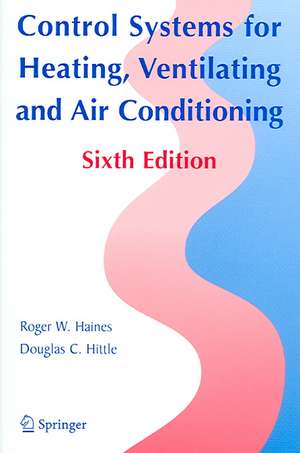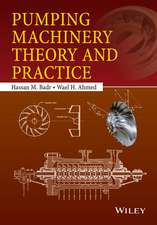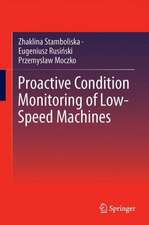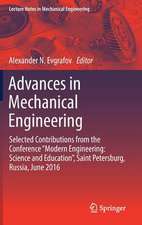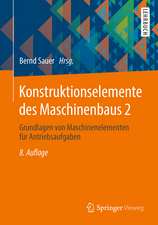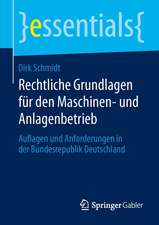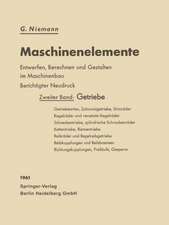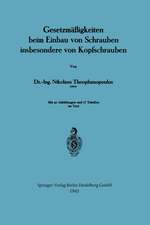Control Systems for Heating, Ventilating, and Air Conditioning
Autor Roger W. Haines, Douglas C. Hittleen Limba Engleză Paperback – 19 ian 2006
Designers of new systems will find the fundamentals described in this book to be a useful starting point, and they will also benefit from descriptions of new digital technologies and energy management systems. This technology is found in modern building HVAC system designs.
Preț: 916.94 lei
Preț vechi: 1118.23 lei
-18% Nou
Puncte Express: 1375
Preț estimativ în valută:
175.46€ • 187.62$ • 146.29£
175.46€ • 187.62$ • 146.29£
Carte tipărită la comandă
Livrare economică 17 aprilie-01 mai
Preluare comenzi: 021 569.72.76
Specificații
ISBN-13: 9780387305219
ISBN-10: 0387305211
Pagini: 366
Ilustrații: XI, 366 p.
Dimensiuni: 155 x 235 x 20 mm
Greutate: 1.19 kg
Ediția:6th ed. 2003
Editura: Springer Us
Colecția Springer
Locul publicării:New York, NY, United States
ISBN-10: 0387305211
Pagini: 366
Ilustrații: XI, 366 p.
Dimensiuni: 155 x 235 x 20 mm
Greutate: 1.19 kg
Ediția:6th ed. 2003
Editura: Springer Us
Colecția Springer
Locul publicării:New York, NY, United States
Public țintă
Academic/professional/technical: Research and professionalDescriere
Control Systems for Heating, Ventilating and Air Conditioning, Sixth Edition contains a comprehensive treatment of heating and air conditioning system controls. This book was originally written to provide fundamentals of HVAC control to practitioners who were designing new control systems or maintaining existing control systems. Emphasis on fundamental control system principles along with the psychrometrics of air conditioning processes has remained a focus of the new edition. While control system technology has changed drastically over the years, the fundamentals of controlling heating and air conditioning systems have changed only modestly.
Readers will find that fundamentals of existing control systems remain in this book so that those who need to maintain or troubleshoot systems that are twenty or thirty years old will be able to see what practitioners did during that time frame. In addition the ubiquitous application of digital control technology in very recent times is also described. Note that the fundamental control principles once implemented pneumatically are now being implemented in modern digital computers - software now replaces hardware. Another change since the last addition is a new emphasis on controlling minimum fresh air for validation purposes. New techniques for doing this have been developed in response to ASHRAE Standard 62, "Ventilation for Acceptable Indoor Air Quality," and these methods are included.
Control Systems for Heating, Ventilating and Air Conditioning, Sixth Edition is complete and covers both hardware control systems and modern control technology. The material is presented without bias and without prejudice toward particular hardware or software. Readers with an engineering degree will be reminded of the psychrometric processes associated with heating and air conditioning as they learn of the various controls schemes used in the variety of heating and air conditioning system types they will encountered in the field. Maintenance technicians will also find the book useful because it describes various control hardware and control strategies that were used in the past and are prevalent in most existing heating and air conditioning systems.
Designers of new systems will find the fundamentals described in this book to be a useful starting point, and they will also benefit from descriptions of new digital technologies and energy management systems. This technology is found in modern building HVAC system designs.
Readers will find that fundamentals of existing control systems remain in this book so that those who need to maintain or troubleshoot systems that are twenty or thirty years old will be able to see what practitioners did during that time frame. In addition the ubiquitous application of digital control technology in very recent times is also described. Note that the fundamental control principles once implemented pneumatically are now being implemented in modern digital computers - software now replaces hardware. Another change since the last addition is a new emphasis on controlling minimum fresh air for validation purposes. New techniques for doing this have been developed in response to ASHRAE Standard 62, "Ventilation for Acceptable Indoor Air Quality," and these methods are included.
Control Systems for Heating, Ventilating and Air Conditioning, Sixth Edition is complete and covers both hardware control systems and modern control technology. The material is presented without bias and without prejudice toward particular hardware or software. Readers with an engineering degree will be reminded of the psychrometric processes associated with heating and air conditioning as they learn of the various controls schemes used in the variety of heating and air conditioning system types they will encountered in the field. Maintenance technicians will also find the book useful because it describes various control hardware and control strategies that were used in the past and are prevalent in most existing heating and air conditioning systems.
Designers of new systems will find the fundamentals described in this book to be a useful starting point, and they will also benefit from descriptions of new digital technologies and energy management systems. This technology is found in modern building HVAC system designs.
Cuprins
README first please. 1: Control Theory and Terminology. 1.1. Introduction. 1.2. What is Control? 1.3. Elementary Control System. 1.4. Purposes of Control. 1.5. Control Action. 1.6. Energy Sources for Control Systems. 1.7. Measurement. 1.8. Symbols and Abbreviations. 1.9. Psychrometrics. 1.10. Relationships. 1.11. Summary. 2: Pneumatic Control Devices. 2.1. Introduction. 2.2. Pneumatic Control Devices. 2.3. Control Cabinets. 2.4. Air Supply. 3: Electric and Electronic Control Devices. 3.1. Electric Control Devices. 3.2. Electronic Control Devices. 4: Fluidic Control Devices. 4.1. Introduction. 4.2. Wall Attachment Devices. 4.3. Turbulence Amplifiers. 4.4. Vortex Amplifiers. 4.5. Radical Jet Amplifier. 4.6. Fluidic Transducers. 4.7. Manual Switches. 5: Flow Control Devices. 5.1. Dampers. 5.2. Steam and Water Flow Control Valves. 6: Elementary Control Systems. 6.1. Introduction. 6.2. Outside Air Controls. 6.3. Air Stratification. 6.4. Heating. 6.5. Cooling Oils. 6.6. Humidity Control. 6.7. Dehumidifiers. 6.8. Static Pressure Control. 6.9. Electric Heat. 6.10. Gas-Fired Heaters. 6.11. Oil-Fired Heaters. 6.12. Refrigeration Equipment. 6.13. Fire and Smoke Control. 6.14. Electrical Interlocks. 6.15. Location of Sensors. 6.16. Summary. 7: Complete Control Systems. 7.1. Introduction. 7.2. Single-Zone Systems. 7.3. Multizone Air Handling Systems. 7.4. Dual-Duct Systems. 7.5. Variable Volume Systems. 7.6. Reheat Systems. 7.7. Heat Reclaim. 7.8. Fan-Coil Units. 7.9. Induction Systems. 7.10. Unit Ventilators. 7.11. Packaged Equipment. 7.12. Other Packaged Equipment. 7.13. Radiant Heating and Cooling. 7.14. Radiators and Convectors. 7.15. Heat Exchangers. 7.16. Solar Heating and Cooling Systems. 7.71. Summary. 8: Electric Control Systems. 8.1. Introduction. 8.2. Electrical Control Diagrams. 8.3.Electrical Control of a Chiller. 8.4.Electrical Control of an Air Handling Unit. 8.5. Example: A Typical Small Air-Conditioning System. 8.6. Electric Heaters. 8.7. Reduced-Voltage Starters. 8.8. Multispeed Starters. 8.9. Variable Speed Controllers. 8.10. Summary. 9: Special Control. 9.1. Introduction. 9.2. Close Temperature and/or Humidity Control. 9.3. Controlled Environment Rooms for Testing. 9.4. Summary. 10: Digital and Supervisory Control Systems. 10.1. Introduction. 10.2. Hard-Wired Systems. 10.3. Multiplexing Systems. 10.4. Computer-Based Systems for Monitoring and Control. 10.5. Benefits of the Computer System. 10.6. Training for Maintenance and Operation. 10.7. Summar
Caracteristici
Includes supplementary material: sn.pub/extras
